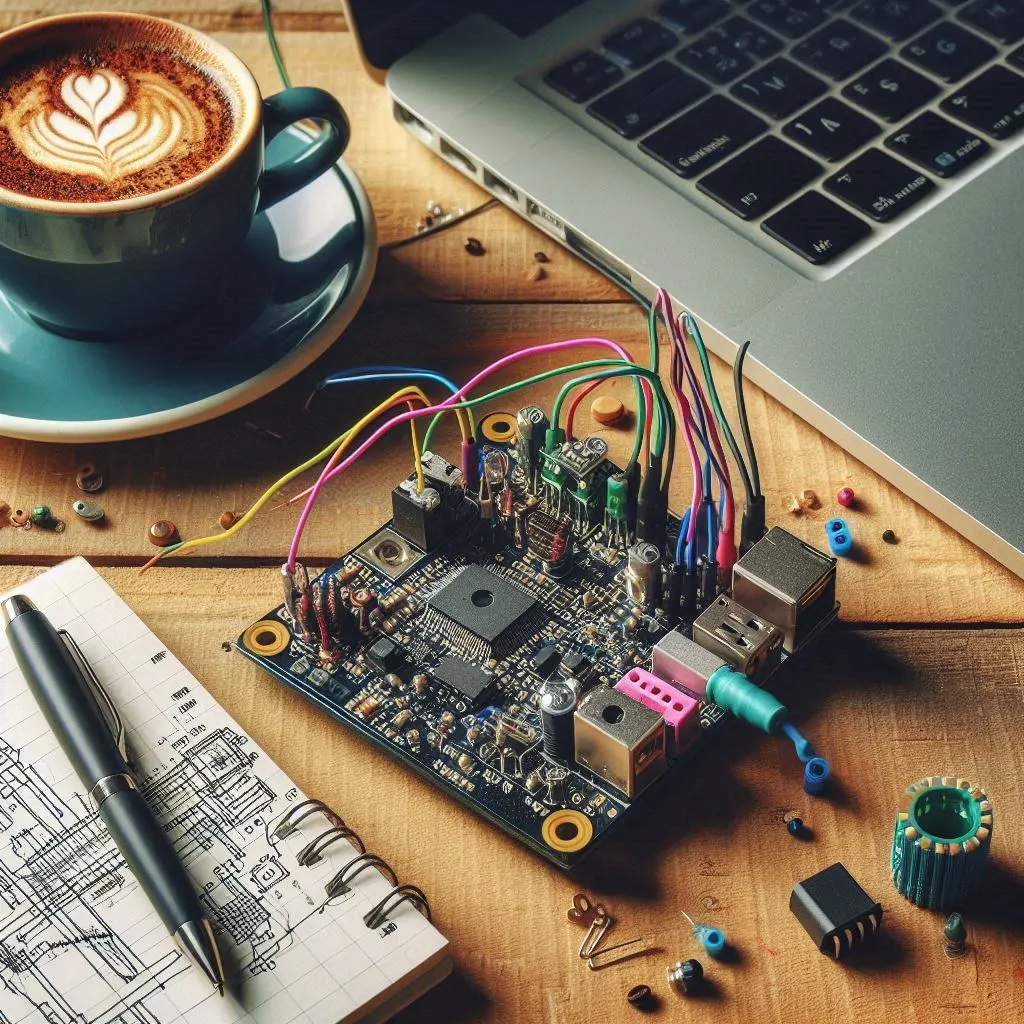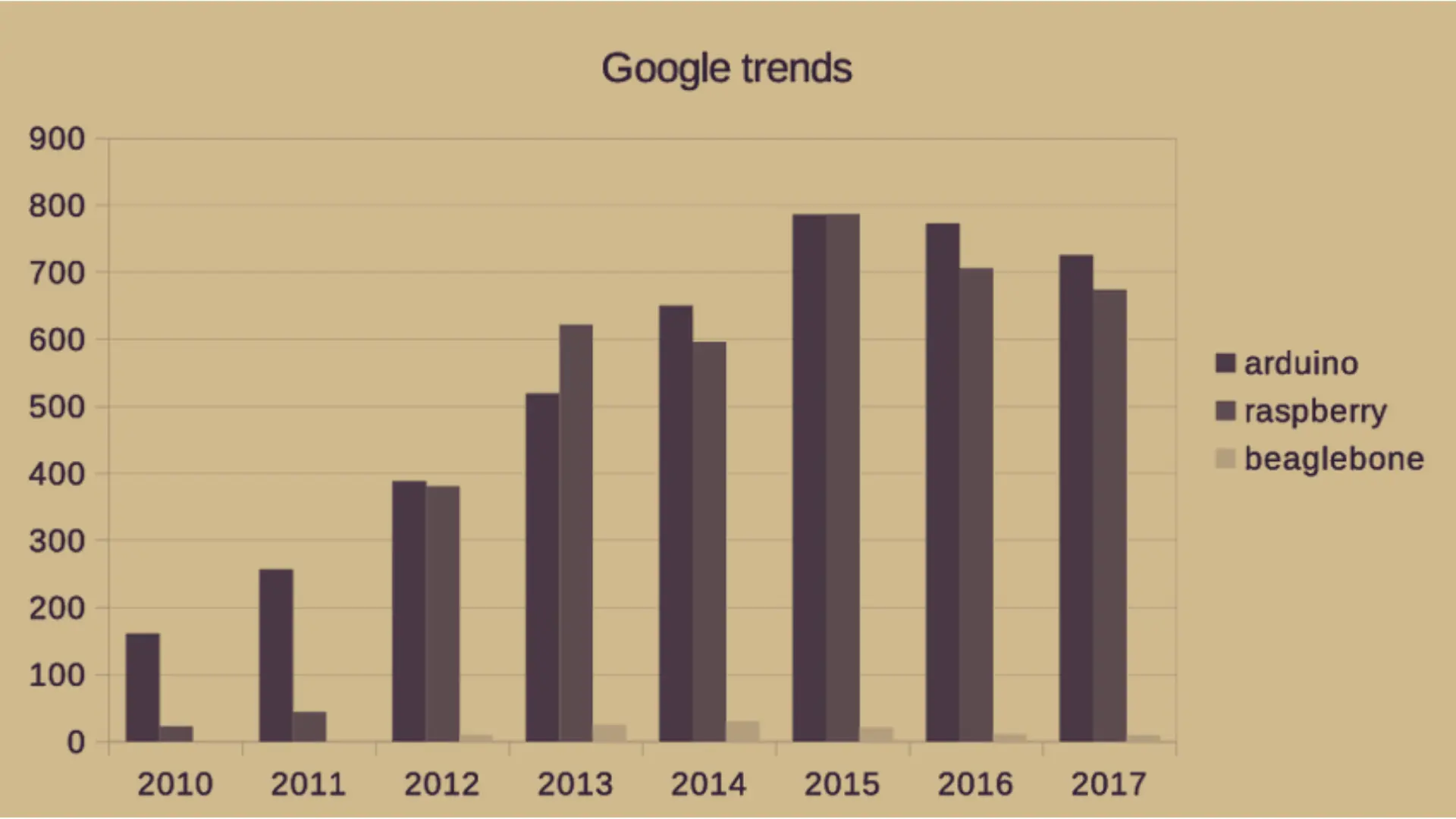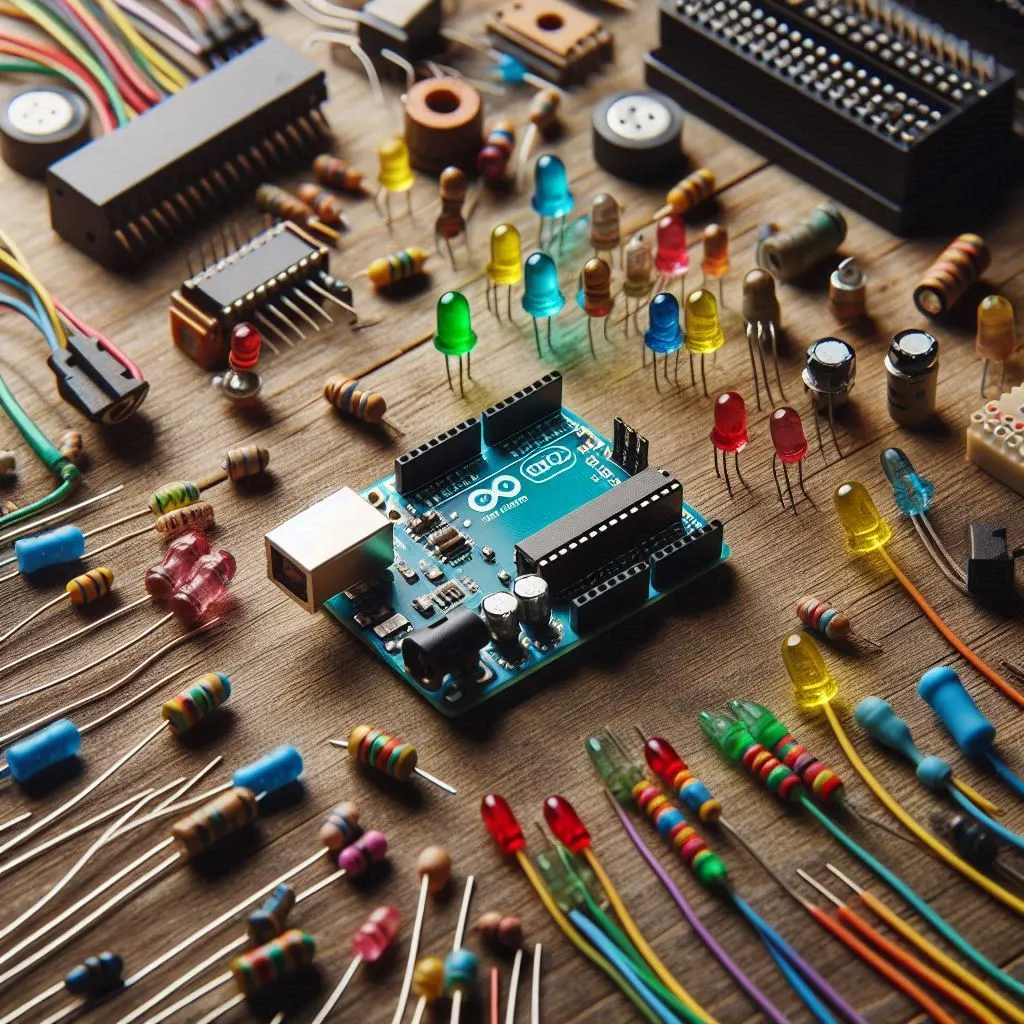
Update: This article was last updated on 26th April 2024 to reflect the accuracy and up-to-date information on the page.

Arduino is a stepping stone into robotics; it’s the gateway.
Being a versatile open-source electronics platform based on simple, easy-to-use hardware and software, Arduino robotics quickly became widely popular both with children and researchers. Arduino reached a milestone in 2021 with over 10 Million Arduino Uno boards sold worldwide! We will continue with our discussion by explaining everything related to Arduino.
What is Arduino?
We will start with Arduino. It is a microcontroller that acts as the brain of robots, controlling various electronic parts like buttons, motors, and lights. Its hands-on approach makes it appealing to kids. It can write programs on a computer and send them to Arduino, learning about robotics and electronics through practical projects. Moonpreneur offers robotics for kids where children build their projects, learning problem-solving skills along the way.

What we can do with Arduino?
An open-source electronics platform based on simple software and hardware, it was developed in Italy in 2005 by Massimo Banzi and other co-founders to provide an easy-to-use and accessible platform for creating interactive objects and environments that are compatible even for usage by young kids aged 8 to 16 years.
Arduino boards consist of microcontrollers, input/output interfaces, and a programming language for kids based on C++. They are widely used for prototyping and creating small-scale school projects such as controlling lights, motors, and sensors, as well as more complex projects such as robots, weather stations, and Internet of things devices.
Arduino boards can be programmed using the Arduino Integrated Development Environment (IDE), which is available for Windows, macOS, and Linux. The Arduino community has also created a large number of libraries and resources, making it easy for even your little ones to get started with electronics and programming. The Arduino robotics platform is all the more popular because of its simplicity, low cost, and flexibility; it is now used by hobbyists, students, artists, and professional engineers for a wide range of applications and projects.
How do we use Arduino in robotics, and what is its role in controlling motors, sensors, and actuators in arduino robotics systems?

Arduino robotics is primarily used to control motors, sensors, and actuators. Motors are used to drive the movement of the robot and can be controlled with the Arduino’s PWM (pulse width modulation) signals. Sensors are used to detect changes in the environment and provide input to the Arduino, which can then use that information to control the robot’s behavior.
Actuators, such as servo motors, can be controlled by the Arduino to perform specific actions or movements.
To understand further, we have outlined the benefits and limitations in a tabular manner to help you get a clearer picture of what roles Arduino can play in robotic systems today!!
A) Benefits
1) Wide compatibility and Ease of use: Arduino has a simple, user-friendly interface and clear documentation, making it accessible for beginners and experts alike. A vast range of compatible hardware components and a large community of users provide access to a wealth of resources, including libraries, tutorials, and forums.
2) Flexibility: Arduino supports multiple programming languages, including C++, and can be easily integrated with other hardware and software components.
3) Low cost: Arduino boards are relatively inexpensive, making them an attractive choice for hobbyists and educational purposes.
4) Scalability: Arduino can be used for both small and large-scale projects, and its modular design makes it easy to expand and modify systems.
5) Real-time control: Arduino provides precise control over hardware and timing, which is critical for many robotics applications.
B) Limitations
1) Processing power: Arduino boards have limited processing power compared to other microcontrollers or computer systems.This can limit the ability of the board to handle complex tasks and calculations, especially in real-time applications.
2) Memory: Arduino boards also have limited memory, both in terms of RAM and flash storage. This can be limiting for projects that require a large amount of data storage or for applications that require a lot of memory for operations.
3) Cost: While Arduino boards are relatively cheap, the cost of additional components, such as sensors, actuators, and communication devices, can add up quickly and make the overall cost of the project higher.
4) Speed: The clock speed of Arduino boards is limited, which can impact the performance of certain real-time applications, such as high-speed data acquisition or motor control.
Uses of Arduino/Arduino robotics
| S.No. | Area | Application |
|---|---|---|
| 1 | Smart Home | Motion sensors, outlet control, temperature sensors, blower control, garage door control, airflow control, sprinkler control, and bill of materials |
| 2 | Defense | Arduino-based, Ultrasonic Radar system |
| 3 | Aero Space | Airplane Flap Model, Integration of RC, Vehicles in a Robotic Arena |
| 4 | Automated Vehicle Control | Control-system, experimentation, strategies, and sensors |
| 5 | Traffic Signal Control | Traffic Light Controller system |
| 6 | Medical | Cancer Detection, Heart Beat Rate measurement, Open source EEG/ECG/EMG, Breathalyzer, Thermometer, Wi-Fi Body Scale with Arduino Board, Lilypad Slipper Automatic Foot Massager |
| 7 | Data Mining | Healthcare, industries, defense, and other automation sectors |
| 8 | Laboratory | Digital microscope with automated slide movement, EEG/ECG Sample collectors |
| 9 | Body Control | HandSight, Heart Rate Monitor, Muscle activity, Temperature, Respiration, Electrodermal Activity, Facial Expression, Eye Tracking |
Why is Arduino Robotics an important part of a child’s education?
Arduino plays a crucial role in engaging children in the world of robotics, enhancing the creativity of those young minds eager to experiment. There are Arduino robotics kits for beginners and flexible options for advanced users. Arduino Robotics helps learners to be creative and solve problems. These are skills they can use in real life.
| Beginners Kits | Advanced Kits |
|---|---|
| Arduino Starter Kit | Arduino GIGA Display Bundle |
| Orange Starter Kit | Arduino Explore IoT Kit Rev2 |
| Arduino Uno R3 Beginner | Make Your UNO Soldering Bundle |
| IDUINO Ultimate Starter Kit | Arduino Science Kit R3 |
What’s Arduino’s Future?
With the increasing demand for low-cost, user-friendly, and highly customizable robotic solutions, Arduino is expected to continue to play a significant role in the future of robotics.
Additionally, advances in technology, such as the Internet of Things (IoT) and machine learning, are likely to drive further growth and innovation in the use of Arduino for robotics. To summarize, the future of Arduino in robotics is likely to be bright and dynamic, with continued growth and opportunities for innovation.
Want to make your child future-ready with Robotics? Moonpreneur offers a tailor-made program. Reserve a spot in our free 60-minute workshop today and introduce them to the amazing world of robotics and innovations!


























I’m very confused about how I choose the right platform for my robotics project.
There are several factors to consider when choosing a platform for your robotics project, including:
The complexity of your projectYour budgetYour programming experienceThe age and skill level of the userThe availability of resources and support
What are some safety precautions that I should take when working with Arduino and robotics?
When working with Arduino and robotics, it is important to follow basic safety precautions, such as:
Always wear safety glasses when working with power tools.Never connect an Arduino board to a live electrical outlet.Be careful when handling batteries, as they can be dangerous if they are mishandled.Dispose of electronic waste properly.